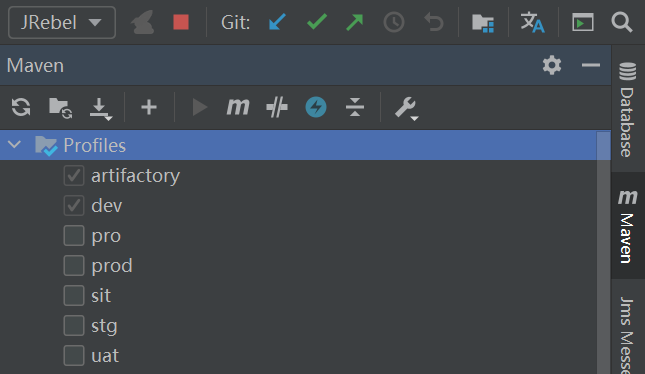maven 的 pom.xml 配置profile指定环境
<profiles>
<!-- 开发环境 -->
<profile>
<id>dev</id>
<!-- 可以通过 @env@ 获取env的值, env也可以换成其他名称 -->
<properties>
<env>dev</env>
</properties>
<activation>
<!-- 指定默认环境 -->
<activeByDefault>true</activeByDefault>
</activation>
</profile>
<!-- 测试环境 -->
<profile>
<id>test</id>
<properties>
<env>test</env>
</properties>
</profile>
<!-- 生产环境 -->
<profile>
<id>prod</id>
<properties>
<env>prod</env>
</properties>
</profile>
</profiles>SpringBoot 获取 maven 配置的环境
在 application.properties 中添加以下配置,获取配置的环境:
可以通过 @env@ 获取maven配置的 profile属性env的值。
spring.profiles.active=@env@当 spring.profiles.active 为 dev 时,会读取 application-dev.properties 的配置。
当 spring.profiles.active 为 test 时,会读取 application-test.properties 的配置。
Intellij idea 切换 profile 环境
点击侧栏的 maven,然后点击 profile。

maven 打包指定环境
打包的时候,如果需要指定不同的环境。
以下的 -P后面是环境变量,可选择dev开发环境,或其他环境进行打包。-DskipTests表示跳过测试。
mvn clean package -Pdev -DskipTests

























 302
302











 被折叠的 条评论
为什么被折叠?
被折叠的 条评论
为什么被折叠?








